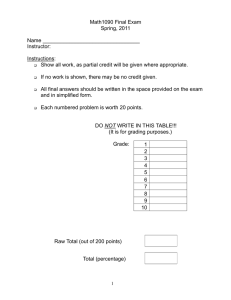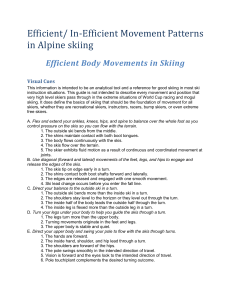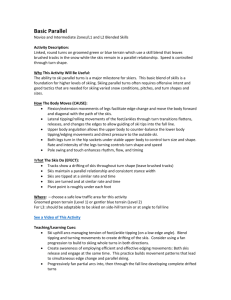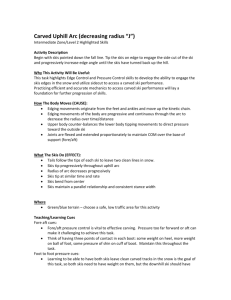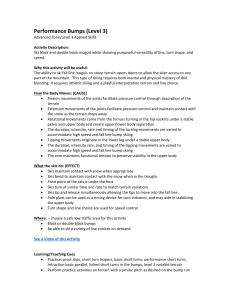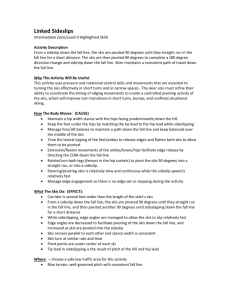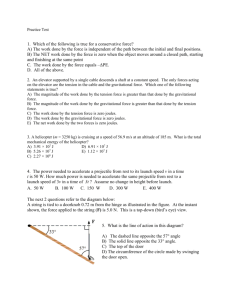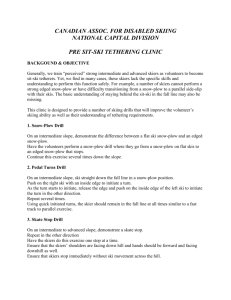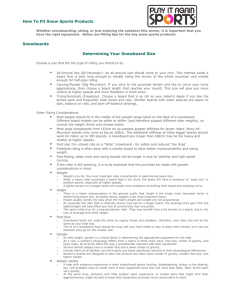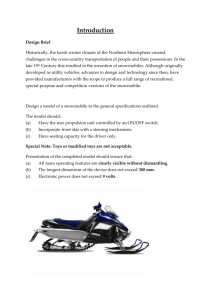Sideslip in the Fall Line - PSIA
advertisement
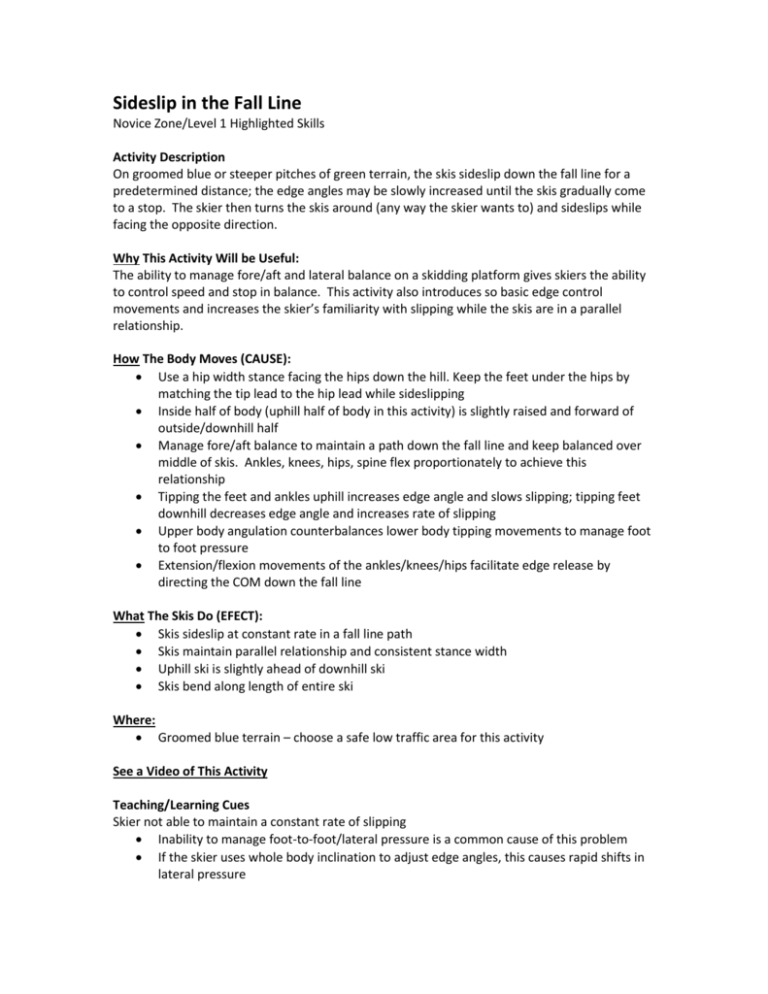
Sideslip in the Fall Line Novice Zone/Level 1 Highlighted Skills Activity Description On groomed blue or steeper pitches of green terrain, the skis sideslip down the fall line for a predetermined distance; the edge angles may be slowly increased until the skis gradually come to a stop. The skier then turns the skis around (any way the skier wants to) and sideslips while facing the opposite direction. Why This Activity Will be Useful: The ability to manage fore/aft and lateral balance on a skidding platform gives skiers the ability to control speed and stop in balance. This activity also introduces so basic edge control movements and increases the skier’s familiarity with slipping while the skis are in a parallel relationship. How The Body Moves (CAUSE): Use a hip width stance facing the hips down the hill. Keep the feet under the hips by matching the tip lead to the hip lead while sideslipping Inside half of body (uphill half of body in this activity) is slightly raised and forward of outside/downhill half Manage fore/aft balance to maintain a path down the fall line and keep balanced over middle of skis. Ankles, knees, hips, spine flex proportionately to achieve this relationship Tipping the feet and ankles uphill increases edge angle and slows slipping; tipping feet downhill decreases edge angle and increases rate of slipping Upper body angulation counterbalances lower body tipping movements to manage foot to foot pressure Extension/flexion movements of the ankles/knees/hips facilitate edge release by directing the COM down the fall line What The Skis Do (EFECT): Skis sideslip at constant rate in a fall line path Skis maintain parallel relationship and consistent stance width Uphill ski is slightly ahead of downhill ski Skis bend along length of entire ski Where: Groomed blue terrain – choose a safe low traffic area for this activity See a Video of This Activity Teaching/Learning Cues Skier not able to maintain a constant rate of slipping Inability to manage foot-to-foot/lateral pressure is a common cause of this problem If the skier uses whole body inclination to adjust edge angles, this causes rapid shifts in lateral pressure Develop ability to use upper body angulation to counter-balance lower body edging movements Goal: while both skis will be weighted in this exercise, the downhill skill will have more weight on it Standing on a side-hill with skis across the fall line, jump and land in balanced athletic stance. Note lateral pressure distribution with more weight on downhill ski. Note that skis are slightly on edge, legs tipped slightly into the hill, upper body is tipped slightly away from the hill Standing on a side hill, lean whole body up the hill using whole body inclination. Note that weight moves to uphill ski and edge angle increase. This is not ideal. Repeat previous exercise for more ideal comparison To initiate sideslipping, progressively decrease edge angle of both skis while moving, allowing COM to move down the fall line and travel with COM. Once skis slide a short distance, slowly increase edge angle using feet and ankles. Note the slipping speed decreases, or may stop. Practice in both directions. Slowly increase distance and speed of sideslipping as skill builds.

